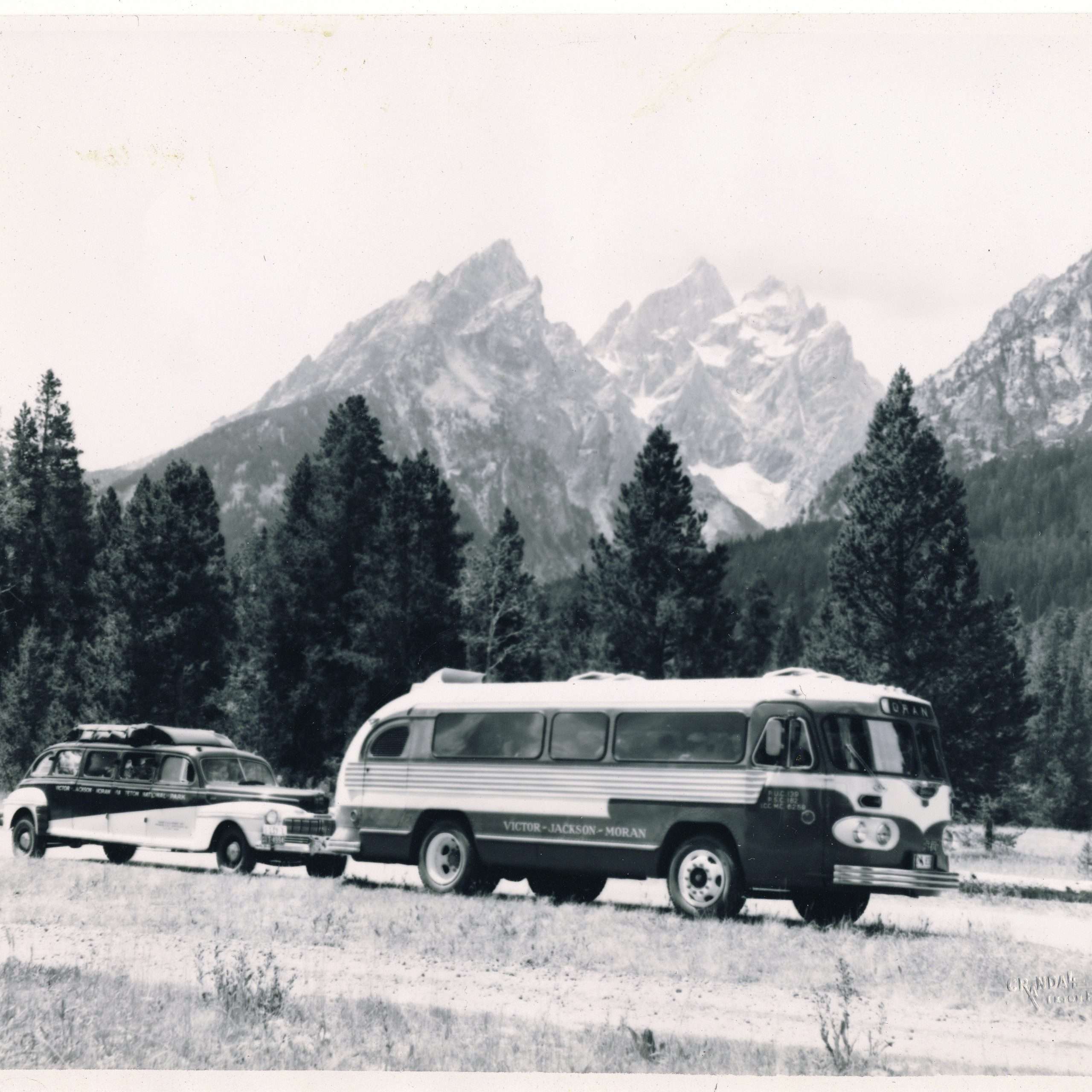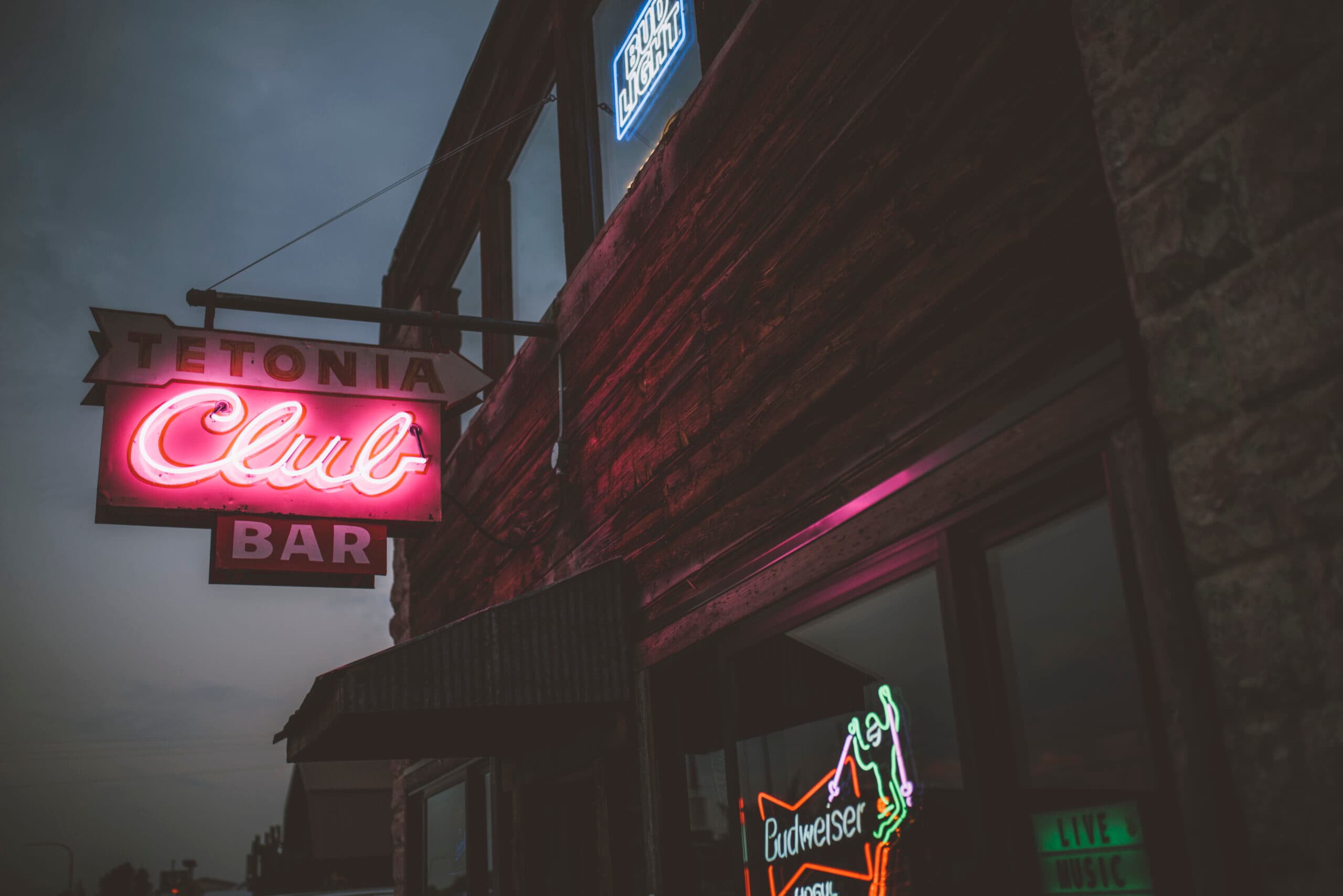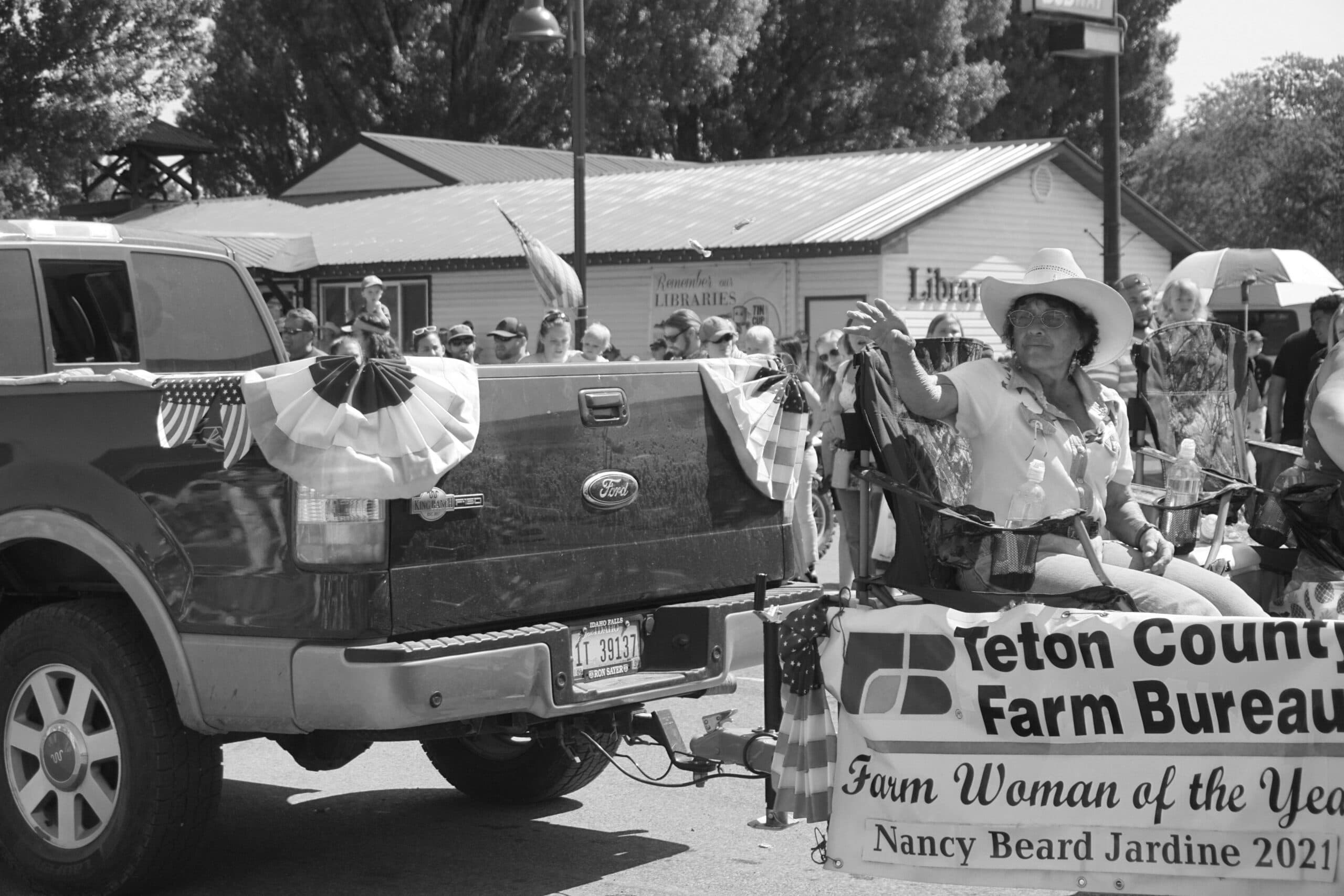They Who Dared
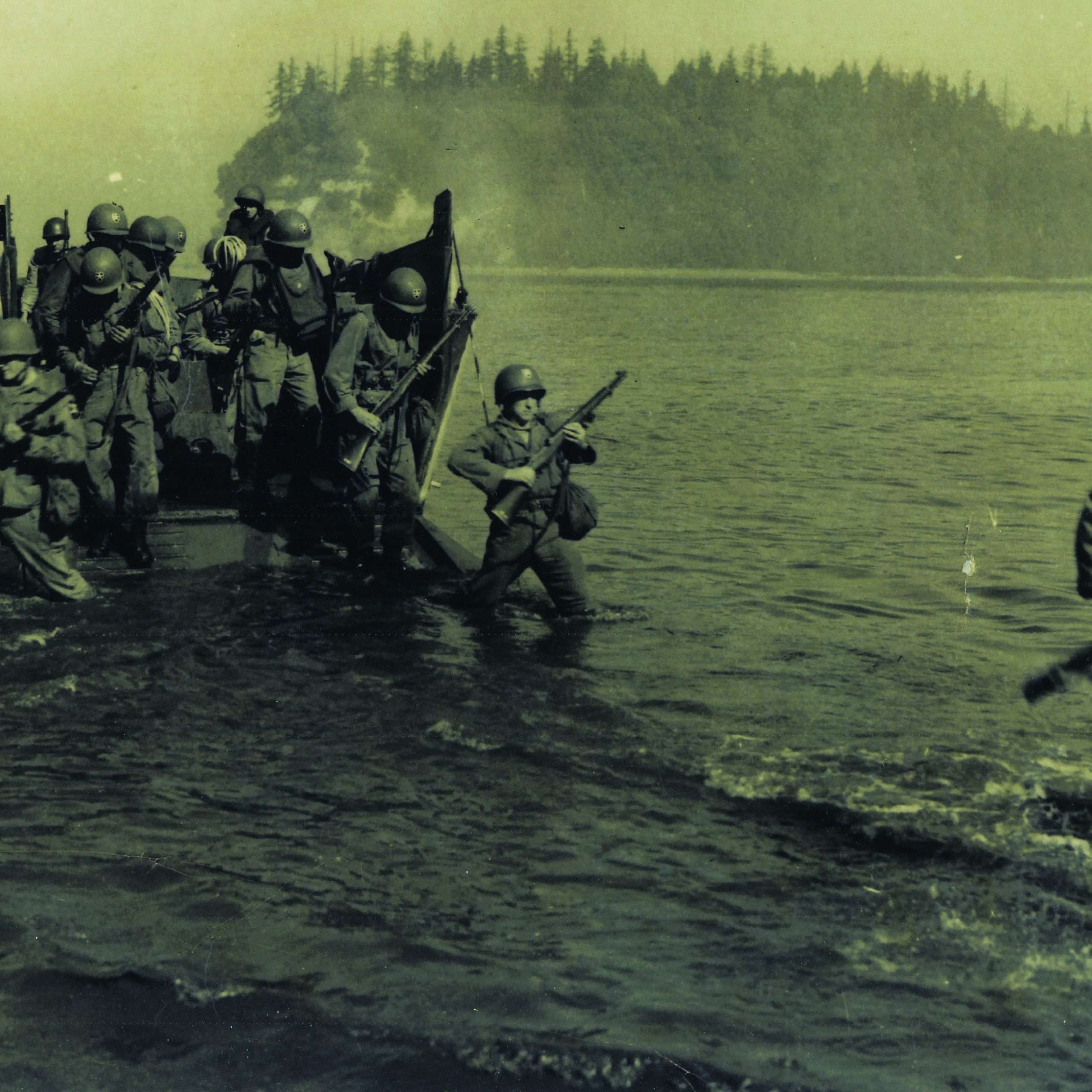
During World War II, a total of 433 soldiers and sailors from Teton Valley were sent from this familiar place to many faraway places.
Of the local men and four local women who served, fourteen were killed in action on Okinawa, at La Shima in the Ryukyu Islands, in Italy and Belgium, in Guam, and at Leyte in the Philippines. One died a captive in a German prison camp, while two more perished aboard a Japanese prison ship.
Some local servicemen were drafted; others volunteered. The roster reads like a Who’s Who of Teton Valley families: Allen, Bates, Foster, Kunz, Hill, Marcum, Wilson, Penfold, Rammell, Sorensen, Kearsley, Dalley, Jensen, Driggs, Nelson, Dalton, Smellie. As of 2000, some 117 male and nine female veterans aged sixty-five and older lived in Teton County, Idaho. The number of the county’s World War II veterans, who are now into their eighties or older, wasn’t just witnesses to history, they played critical parts in making history.
Women joined the military in greater numbers than ever before. In the Armed Services, men assumed roles they hadn’t imagined for themselves, becoming pilots and paratroopers, machine gunners and merchant marines. Some continued in positions similar to those they’d held in civilian life—roles perceived as less glamorous than serving in combat, perhaps, but equally necessary to the war effort—as supply managers, postmasters, auto mechanics, and more.
The stories of local veterans provide a microcosmic look into the greater sphere of World War II. For example, it wasn’t unusual for entire families of brothers to serve in the military. Take the Wilson family of Alta: John Mark Wilson served in the Army, seeing combat in the Solomon Islands; Wayne L. Wilson served in the Navy; Grant Larson Wilson entered the Air Force; and Ralf Thomas Wilson enlisted in the Army and was transferred to the Army Air Corps.
Lynn Kearsley was a military man only during World War II, but the war’s impact has stayed strong in his life. Others spent many years in the service. The late Bruce Kunz, for example, accumulated twenty-eight years of military service, including six years in the Air Force Reserve. Ralf Wilson contracted malaria while a prisoner-of-war, which flared just before he planned to leave the service in February 1946; so, instead, he re-upped and spent two decades in the Air Force.
Regardless of how long they served, World War II veterans share an enormous sense of patriotism. As Kearsley said recently, “If it hadn’t been for the veterans, where would this country be today?” Kunz’s son, Michael B. Whitfield, noted his father’s pride as a veteran in the life sketch presented at Kunz’s funeral. “In the years to follow, he always stood taller than about anyone when the American flag was presented,” Whitfield said.
Wilson occasionally speaks to youth groups, because, he says, “These kids need to know a little something about history.” Indeed. We all do. The following four stories capture the essence of hundreds of other tales that could be told.
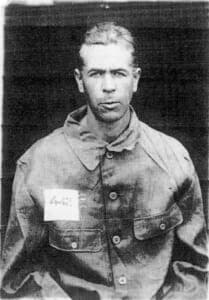 RALF THOMAS WILSON:
RALF THOMAS WILSON:

Faith Freed Him of Fear
Ralf Thomas Wilson, from Alta, was a soldier in the Philippines when the entire group of islands was surrendered to the Japanese. The Allied troops were informed that, as of that moment, they were prisoners of war. Their commanders directed them back to their bivouac tents to destroy anything in their possession that could prove beneficial to the Japanese.
“There were about ten of us in my area, and we went through everything—pictures, maps, all that we had,” Ralf recalls. “We built a fire so it could be all burned.”
“We were sitting around that fire and I became panic-stricken. I went out in the jungle, about fifty yards or so, and I knelt down and prayed like I never prayed before. All of a sudden, just as loud and clear and distinct as I can hear you now, a voice told me, ‘It’s okay, Ralf. You’ll be alright.’ At that moment I was completely free of fear. A feeling of peace washed over me. From then on, I knew I’d be okay.”
That a conviction held true through his entire three and a half years as a POW, Ralf says. It was severely tested about two months before the end of the war, when the commander of the Japanese camp told the Allied prisoners if the Americans were audacious enough to invade Japan, his orders were to execute the entire camp.
“Even in the face of that, I knew somehow I would be okay,” Ralf says. The dropping of the atom bomb on Hiroshima saved him and the other POWs, as well as many of the combatants on both sides who would have been engaged in an invasion and defense of Japan. “The atom bomb is the only reason I’m still alive,” Ralf says.
At his capture in May 1942, Ralf weighed about 170 pounds. When he was released in Japan following the bombing of Nagasaki, he weighed 117 pounds.
The worst he ever felt, he says, was when his buddy, Chester “Doc” Brumley died. Doc, from Illinois, had signed up when Ralf did. They joined the same unit, shipped overseas together, and were assigned to the same machine-gun nest in combat. While POWs, they were transported to Japan together and assigned to the same work detail at a copper smelter.
“We were together continuously from 1941 until 1944,” Ralf remembers. “Then, in December that year, he and I both came down with pneumonia. I called down to his pad—we didn’t have beds,
just pads on the bare floor—and he said, ‘Ralf, we’re just never going to get out of here.’ He said, ‘I’ve just decided this isn’t worthwhile.’”
Wilson tried “just about anything to make Doc mad,” he says, but he didn’t react. Finally, “I crawled back to my pad. The next morning, Doc was dead.”
Ralf uses this story when he speaks to young people to demonstrate that they can do whatever they make up their minds to do. “He just gave up, and that was it. I’ve reflected more on that as a tragedy … than anything that happened to me. Yes, I underwent several things that were physically bad. But just giving up and going away—it didn’t have to happen.”
Ralf was sent to Madigan General Hospital in Tacoma, Washington, to recover from his ordeal. One of his duty nurses was Janet Ross, a member of the Army Nurse Corps. It must have been fate that brought them together: As if they were starring in a wartime romance movie, the two were later married.
Ralf Wilson, discharged as an Army major in 1961, turns ninety on his next birthday. He and Janet, now living in Rigby, recently celebrated their sixtieth wedding anniversary. One of his most prized possessions is a signed photograph of Col. Paul Tibbets, the man who dropped the atom bomb on Hiroshima.
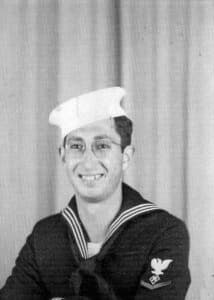
LYNN KEARSLEY:
Postmaster at Pearl Harbor
“A speaker told us that if we served honorably and took advantage of the opportunity the military provided we would be blessed. And it came to pass. I wouldn’t give ten cents to go back, but I wouldn’t trade the experience for a million dollars.”
Lynn S. Kearlsey was the postmaster in Victor when he received his draft notice in 1944. Married, already twenty-seven years old, and with a three-year-old, he reported for duty in the Navy along with several others from Teton Valley. While in San Diego for basic training, the inductees took tests to see where they might qualify for duty. Naturally, Lynn took the mailman’s exam.
“I earned a third-class petty officer rating right out of boot came,” he says, which was a big step above going in as a seaman. He also had an advantage because the rumor mill said they would be assigned to Navy 128,” and Lynn knew, from forwarding so much military mail back home in Idaho, that 128 was Pearl Harbor, in Honolulu.
Lynn spent almost two years at the post office there. For the first six months, he wrote money orders; dispensing twenty-five to thirty thousand dollars’ worth of them a day, for sailors just in from the Pacific, was not unusual. After that he transferred to the section handling registered mail, which “came in by the sack full,” he says. Later, Lynn was put in charge of finances at the Navy Yard Post Office, which involved handling many tasks with huge sums of money, as he shuttled checks to and from the disburser’s office.
In one memorable incident, Lynn had to purchase a million dollars in stamps from the main Honolulu Post Office for a ship’s crew. “We had a three-quarter-ton stake-bed pickup [truck] loaded with stamps in bundles eight to ten inches thick,” he says. “We passed around the check so that all the fellows in the post office could say they’d held a million dollars in their hand.”
Because, he says, Pearl Harbor was a “jumping off place for people going out and coming back,” Lynn—who also served as LDS servicemen’s group leader—occasionally crossed paths with others from Teton Valley and elsewhere in eastern Idaho. He remembers sitting under the Hawaiian moon with them, reminiscing about home.
Lynn’s wartime memorabilia remains important to him. His Naval appointment was signed by Franklin Roosevelt (as was his 1939 commission as Victor postmaster). After his discharge in Bremerton, Washington, he received a letter from President Harry Truman, expressing “heartfelt thanks from a grateful nation.”
Lynn Kearsley served as Victor postmaster for forty-five years, retiring in 1982. His wife Ruth filled in for him while he was in the service. Now eighty-eight and living in Idaho Falls, he has been active in the American Legion, speaking to school groups and to other veterans. He remembers that as the shores of America faded from view as they left California, another sailor pointed up to the mast and said, “At least we have Old Glory with us.” Lynn’s never forgotten that.
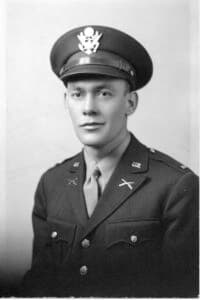
TED MAJOR:
Mountaineer of Necessity
Utah native Ted Major, now a resident of Victor (and founder, in 1967, of the Teton Science Schools) was twenty-one and in his third year of college when he was drafted into the Army in November 1941. Because they were expert skiers, both he and his brother Jack were recruited into the newly formed 10th Mountain Division, established to train and equip soldiers for winter and mountain warfare.
After basic training in California, Ted was shipped to Fort Lewis, Washington. His next stop was Fort Benning, Georgia, where, because of his college education, he was put through a crash course to become an officer. “I was what they called a ninety-day wonder,” Ted says.
By this point, the ski troops had been moved to Camp Hale, Colorado, where they trained in rock climbing and mountaineering in the high altitudes and often-brutal weather of the Rocky Mountains. With skis underfoot or strapped to their rucksacks, the soldiers made their way to training sites at extremely remote locations.
Ted remembers climbing 14,005-foot Mount of the Holy Cross, one of the best known of Colorado’s fourteeners,” for artillery practice. The men’s steel-framed, regular full field packs weighed about sixty pounds loaded. They also trained carrying more than a hundred pounds of gear apiece, as the three parts needed for a mortar—baseplate, tripod, and tube—each weighed forty-five pounds.
“We were staggering up there,” Ted recalls.
Why train under so much difficulty?
“Someone in the 10th thought we should try,” he says.
Ted speaks proudly of the critical role played by the 10th Mountain Division in two important strategic victories: booting the Japanese from Kiska in the Aleutian Islands off Alaska, and climbing the steepest rock faces in the Apennines of northern Italy in what became known as the Riva Ridge operation. Mountaineers from the 10th took Mt. Belvedere from the Germans by surprise, going up by rope at night and moving ahead of infantry divisions so roadways could be opened for the Allied troops.
Ted’s brother Jack served in a reconnaissance unit, charged with locating Germans hill by hill. “The 10th was the only division that had a chance to accomplish this,” Ted says. “There were no helicopters, no machines to make it easier. Our men were trained in mountaineering. These guys trained and trained on how to climb vertical cliffs and how to ski.”
As a second lieutenant, Ted Major served as platoon leader for an 81-mm mortar unit in France, Belgium, Luxembourg, and Germany. When asked about his own World War II experiences, he says he “doesn’t like to think about it.” However, he has provided information and artifacts (brought home by brother Jack) to the 10th Mountain Division Resource Center in Denver.
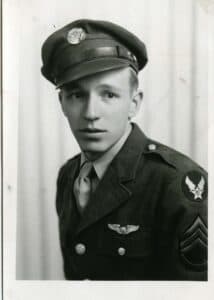
BRUCE KUNZ: One Man’s First Flight
By Michael B. Whitfield
In the early hours of June 6, 1944, Bruce Francis Kunz of Victor piloted an unpowered glider over the waters of the English Channel. The long cable at the glider’s front connected it to a lumbering C-47 tow plane, and Bruce struggled to avoid the prop wash that could rip the canvas skin from his fragile craft. The glider bucked like a colt; several of the soldiers who rode with Bruce became airsick. He was excited to be part of such a huge operation, but fearful of the enemy waiting in the darkness.
At first light, in the fields of France, the farm boy from Idaho became a man.
Bruce was only twenty-two on D-Day. He had volunteered for the Army Air Corps in December 1941, one day before the bombing at Pearl Harbor. Nearly all of the young men in Teton Valley wanted to get into the service, and he was no exception.
Bruce was initially an Army signalman. Later, a friend, who wanted to get into the voluntary glider program, signed up both of them without consulting Bruce. The friend washed out, but Bruce’s course as a pilot was set.
Training was hazardous. The little-tested gliders fell apart in-flight or broke up on landing, and otherwise exposed the young men in them to a plethora of risks.
D-Day was Bruce’s first combat flight. Although flying from England directly to Normandy might have taken only thirty minutes, the invasion route included hours of evasive tactics. He remembered flying so low over the sea that he imagined he could dip water with his wing tips. The glider carried a battalion commander, six troops, and a jeep and trailer loaded with ammunition designed for setting up a supply headquarters.
At first light, they landed in the designated zone, a field surrounded by foliage about twenty miles inland. His co-pilot was hit in the leg by ground fire and a trooper’s ankle was sprained during the landing. All around them Bruce saw fires from gliders and tow planes that had been hit. As the glider slowed, it hit a hedgerow; the surrounding trees partially sheltered the destroyed craft from German machine-gun fire. Enough fuselage broke away to allow the men to wrestle the jeep out of the glider. At this point, Bruce became an infantryman, with the assignment of getting back to England as best he could.
Unfortunately, the Germans had established a command post in the same area. Shooting and confusion dominated the first day. American soldiers dead, wounded, and still in the fight were gathered in the area from other glider landings and paratrooper drops. Bruce saw inhumanity on both sides. He was appalled to find dead soldiers in their stocking feet, their boots having been stolen. A dead paratrooper hung from a tree all day; he could not be cut down because of enemy
fire.
After several days, Bruce made the beach, and was assigned to escort several thousand German prisoners back to England. Although he and other guards were given pills to keep them awake, he fell asleep on his weapon on the ship. Luckily, his prisoners slept as well.
Bruce would fly again in World War II combat just twice more: on the September 1944 Market Garden operation in Holland, and to transport a full load of twenty-two airborne troops from France over the Rhine into Wesel, Germany, in March of 1945. Later, after the armistice, he piloted several C-47 cargo-plane flights hauling displaced persons, including POWs, to other locations. These flights, he said, were true heartbreakers, to witness the condition of some of the war’s survivors. He was discharged from the Army Air Corps in December 1945, and returned home a hero.


